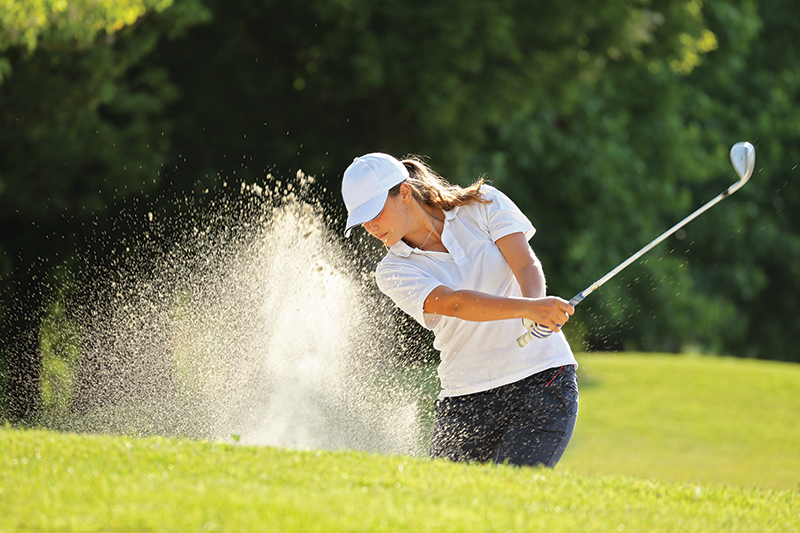Golfers are always looking for an edge, a way to improve their game. The golf industry is geared toward technology. In 2023, it was estimated that the golf equipment market had revenues of 2.67 billion dollars. But what if the answer to playing better and feeling better lies within you? Do you remember when you hit farther or could play 36 in a day? As we age, we lose flexibility and mobility. But there is still hope and answers to playing better and playing longer, regardless of age.
Let’s unlock your potential in a different way. Have you ever thought about what is required in the golf swing from the body? Where does the power come from? How can you increase swing speed? How can you feel better after a round of golf or, most importantly, feel good enough to even want to play a round of golf? Let’s break it down in terms everyone can understand.
Your body is a series or system of muscle groups. When your body is firing on all cylinders, they work as a group to assist you in many tasks, including your golf game. (You can substitute pickleball, tennis, and everyday activities for the activity of golf.) But when your body has muscle imbalance, nothing works together. In fact, it is just the opposite.
Golf is a rotational sport. Flexibility and mobility are critical to allowing this rotation to occur.
Producing the Power
Two large muscles integral to golf are the pectoral and psoas muscles. The pectoral muscles’ main function in the golf swing is to provide range of motion to the arms and raise and lower the shoulders. These muscles also provide the downward force behind the downswing.
The psoas (pronounced so-as) muscle is the only muscle that connects the upper torso to the lower legs. This muscle, along with the hip flexors, is the ignition that starts your golf swing. They work in conjunction with your obliques, glutes, hamstrings, and quadricep muscles to create the rotation and strength required to consistently hit the ball farther.
The psoas muscles are located on either side of the body, attaching to the lowest part of the spine (to the last five vertebrae), running through the pelvic area, and attaching to the femur bone. The psoas is unique in that it is the only muscle that attaches the spine to the lower body, making it one of our most important muscles. This deep-seated core muscle is responsible for many functions – we use our psoas muscle for core movement, but also for standing, walking, and running, and it is vital for balance. The psoas muscle is crucial in our body’s range of motion. When the psoas becomes shortened, it creates discomfort in the low back and tightens in the hips.
A shortened psoas will also throw off your posture. Muscles in their natural state are long and pliable, able to move freely and allow us range of motion. Muscles that are shortened lose flexibility and create pressure on the body. As large muscles like the psoas contract, they are difficult to lengthen again. Creating sustained pressure is the best way for large muscles to soften and relax and return to their lengthened state.
The answer to faster swing speeds and more power is stronger muscles and greater flexibility.
So, half of the secret to hitting it farther is strength, but the other half is greater flexibility and mobility. In many cases, tightly contracted muscles are holding you back from playing your best golf or playing golf at all. Muscle contraction is the source of the pain and restriction you feel during and after your golf game, as well as other activities.
Robotic Muscle Therapy – Improve Your Pain and Your Golf Game!
What if the answer lies in releasing tightly contracted muscles and lengthening the muscle fibers? What if releasing tightly contracted large muscles relieves the pressure and tension your joints are under, eliminates joint dysfunction, and allows for greater mobility and flexibility? What if your pain could be eliminated or significantly reduced? What would your game be like – and what would your life be like – without the pain?
Robotic muscle therapy was developed to do just that. This technology targets the source of your pain like nothing else can. Using precise placements, pressure, vibration, and heat, this FDA-approved Class 2 technology delivers deep muscle therapy directly to the affected muscles.
Robotic technology is drug-free, noninvasive, and passive therapy. The secret to the success behind this technology is that, unlike the human hand, robotic therapy allows for precise pressure control, greater time in the muscle, rhythmic sequencing of pressure, vibration, and heat applied directly to the muscle and the ability to access the muscle groups in a way that is comfortable for the person having the therapy.
If you find yourself unhappy with your game, in pain, experiencing lost mobility and flexibility, or just wanting to feel better, robotic muscle therapy could be the game-changer you have been searching for. Schedule your appointment today and start living “Pain-Free in Paradise”!
We offer a complimentary consultation so clients can learn more about this revolutionary technology. We learn about your condition, and you discover whether this therapy can help you. You truly have nothing to lose—except your pain. Theresa Edmunds is a Certified Health Coach and co-owner of Naples Robotic Pain Relief. She is passionate about helping people feel better.
To schedule a no-cost consultation or for more information, contact 239.778.6842 or visit: naplesroboticpainrelief.com.
